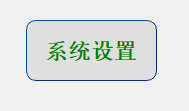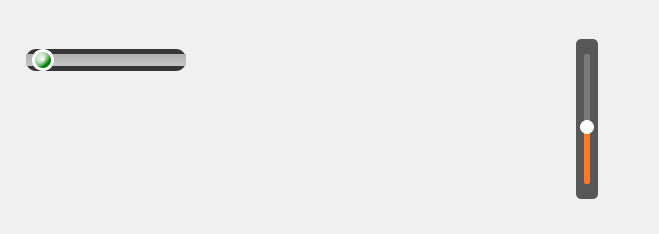大家好,欢迎来到IT知识分享网。
文章目录
一、什么是qss?
Qt Style Sheets ,简写是QSS,Qt样式表,用于修改控件外观,美化界面。它类似于前端的CSS(Cascading Style Sheets)但专门用于Qt应用程序。QSS允许开发者通过样式表来控制窗口部件的外观和感觉,而无需修改应用程序的源代码。
例如:下面QLabel的样式设置
QLabel {
background-color: rgb(54,54,54); /*背景色*/ color: rgb(230,230,230); /*字体颜色,前景色*/ font-family: "Microsoft YaHei"; /*字体类型*/ font-size: 14px; /*字体大小*/ } 注释形式:
/*我是qss注释*/ 除了以上样式外,还有很多,qss千变万化,可以写出各种花里胡哨的样式。
二、常用样式
1. 字体样式
下面介绍跟字体相关的样式
font-family: "Microsoft YaHei"; font-size: 14px; font-style: italic; font-weight: bold; color: #; 解释如下:
- font-family :为设置字体类型,标准形式需要加双引号,不加也可能会生效,具体看系统是否支持,中英文都支持,但要保证字体编码支持,一般程序编码为”utf-8″时没问题。
- font-size :为设置字体大小,单位一般使用 px 像素
- font-style :为设置字体斜体样式,italic 为斜体, normal 为不斜体
- font-weight : 为设置字体加粗样式,bold 为加粗, normal 为不加粗
- color :为设置字体颜色,可以使用十六进制数表示颜色,也可以使用某些特殊的字体颜色:red, green, blue 等,或者使用 rgb(r,g,b) 和 rgba(r,g,b,a) 来设置,其中 r、g、b、a 值为0~255,如果想不显示颜色可以设置值为透明 transparent;
注意:字体颜色用的是 color 属性,没有 font-color 这个属性
字体可以一起设置:
font: bold italic 18px "Microsoft YaHei"; 同时设置字体的weight、style、size、 family 的样式时,
- style(是否斜体) 和 weight (是否加粗)必须出现在开头,size 和 family 在后面,而且 size 必须在 family 之前,否则样式将不生效,
2.边框样式
下面介绍跟边框相关的样式
QLabel {
border-style: solid; /*单独设置某一边 border-right-style:dotted;*/ border-width: 2px; border-color: red; border-radius:8px; } 解释如下:
- border-style: 这个属性定义了边框的样式。
border-style: none;表示没有边框。border-style: solid;表示边框是实线。border-style: dashed;表示边框是虚线。border-style: dotted;表示边框是点线。border-style: double;表示边框是双线。border-style: groove;表示边框看起来像是凹进去的。border-style: ridge;表示边框看起来像是有脊的。border-style: inset;表示边框看起来像是内嵌的。border-style: outset;表示边框样式为外凸
- border-width: 这个属性设置了边框的宽度。
- border-color: 这个属性定义了边框的颜色。
- border-radius: 这个属性设置了边框角的圆角半径。
边框也可以一起设置
border: 2px solid red; 表示边框设置为2像素宽的实线,颜色为红色。
边框的属性还可以左上右下分开设置:
//顶部边框样式 border-top-style: solid; //设置顶部边框的样式为实线(solid) border-top-width: 2px; //设置顶部边框的宽度为2像素。 border-top-color: red; //设置顶部边框的颜色为红色。 border-top: 2px solid red; //顶部边框设置为2像素宽的红色实线 //右侧边框样式 border-right-style: solid; border-right-width: 3px; border-right-color: green; border-right: 3px solid green; //底部边框样式 border-bottom-style: solid; border-bottom-width: 2px; border-bottom-color: blue; border-bottom: 2px solid blue; //左侧边框样式 border-left-style: solid; border-left-width: 3px; border-left-color: aqua; border-left: 3px solid aqua; 边框半径(圆角)也可以单独设置
border-top-left-radius: 5px; //左上角的圆角 border-top-right-radius: 10px; border-bottom-left-radius: 15px; border-bottom-right-radius: 20px; border-radius: 20px; /*统一的半径*/ 若不需要边框则可设置为border:none;
3.文字位置
在 qss 中,没有对齐方式,只能通过设置 padding 来实现文字的显示位置;一般 padding-left 相当于 x 坐标,padding-top 相当于 y 坐标,设置这两个就可以在任意位置显示了(默认情况下文字是上下左右都居中显示的)
//内边距,设置文本与边界之间的空间 padding-left: 10px; padding-top: 8px; padding-right: 7px; padding-bottom: 9px;
QLabel的文本默认是居中的,无论是水平方向还是垂直方向。如果你想要改变这种默认行为,可能需要使用QLabel的alignment属性来指定文本的具体对齐方式。
4.背景样式
其它的控件也适用背景样式,下面介绍与背景有关的样式
background-color: rgb(54,54,54); background-image: url(:/imgs/picture/0.png); /*显示背景图片, 也可以不用引号*/ background-repeat: no-repeat; /*不重复显示*/ background-position: left center; 解释如下:
- background-color:为设置背景颜色,可以使用十六进制数表示颜色,也可以使用某些特殊的字体颜色:red, green, blue 等,或者使用 rgb(r,g,b) 和 rgba(r,g,b,a) 来设置,其中 r、g、b、a 值为0~255,如果想不显示颜色可以设置值为透明 transparent
- background-image: 为设置背景图片,图片路径为 url(image-path)
- background-repeat: 为设置背景图是否重复填充背景,如果背景图片尺寸小于背景实际大小的话,默认会自动重复填充图片,可以设置为 no-repeat 不重复,repeat-x 在x轴重复,repeat-y 在y轴重复
若背景图片大小为64×64,而背景实际大小为300×300,若没有设置
background-repeat: no-repeat;,则显示如下: - background-position: 为设置背景图片显示位置,只支持 left right top bottom center;值 left right center 为设置水平位置,值 top bottom center 为设置垂直位置
统一设置
background: url(":/imgs/picture/0.png") no-repeat left center #; background 为设置背景的所有属性,color image repeat position 这些属性值出现的顺序可以任意
5.动态悬浮样式
hover 用于选择用户鼠标悬停在其上的窗口部件。当用户将鼠标指针移动到QLabel上时,QLabel:hover中定义的样式就会生效。
QLabel:hover {
color: red; border-color: green; background-color: #; } 上述样式设置后,当鼠标悬停在QLabel上时,文本变成红色,边框颜色变成绿色,背景颜色变成深灰色。
6.禁止使用的样式
disabled 是一个伪类选择器,用于选择处于禁用状态的窗口部件。当一个QLabel被设置为禁用状态时,它不会响应用户的任何交互,比如点击或悬停。使用:disabled伪类,你可以为禁用状态下的QLabel定义特定的样式。
QLabel:disabled {
color: blue; border-color: brown; background-color: #; } 样式代码定义了当QLabel处于禁用状态时的样式:
- 文本颜色变为蓝色(
color: blue;)。 - 边框颜色变为棕色(
border-color: brown;)。 - 背景颜色变为深灰色(
background-color: #;)。
在Qt中,要使一个
QLabel或其他窗口部件处于禁用状态,你可以使用相应的方法,例如对于QLabel,你可以调用setDisabled(true)方法。当需要重新启用该部件时,调用setDisabled(false)即可。
三、控件应用
更完整的控件应用参考:Qt开发 | qss介绍 | 常用样式 | 控件样式应用 | qss选择器
1.QLabel
效果图
鼠标悬浮后:
qss代码如下:
QLabel {
font-family: "Microsoft YaHei"; font-size: 18px; color: #BDC8E2; font-style: normal; font-weight: normal; border-style: solid; border-width: 2px; border-color: aqua; border-radius: 20px; padding-left: 20px; padding-top: 3px; background-color: #2E3648; background-image: url("./image.png"); background-repeat: no-repeat; background-position: left center; } 除此之外,我们还可以设置动态样式,鼠标悬浮时的样式
QLabel:hover {
color: red; border-color: green; background-color: aqua; } 2.QLineEdit
常用属性设置
setReadOnly(false); // 只读 setFocusPolicy(Qt::NoFocus); // 设置控件的焦点策略:无法获得焦点 setMaxLength(10); // 最多输入10个字符 setEchoMode(QLineEdit::Password); //设置行编辑的回显模式为密码模式 =文本对齐方式
lineedit->setAlignment(Qt::AlignLeft) //左对齐 lineedit->setAlignment(Qt::AlignRight) //右对齐 lineedit->setAlignment(Qt::AlignCenter) //居中对齐 正则控制输入。例如:第一个数是1-9的,第二个数和之后的是0-9的
QRegExp regx("\\w[-\\w.+]*@([A-Za-z0-9][-A-Za-z0-9]+\\.)+[A-Za-z]{2,14}"); //邮箱正则 QValidator *validator = new QRegExpValidator(regx, ui->lineEdit); lineEdit->setValidator(validator); //设置行编辑值的验证器为正则,满足正则的输入才为有效值 样式设置
qss代码
QLineEdit{
border: 1px solid #ABCDA0; /* 边框宽度为1px,颜色为#A0A0A0 */ border-radius: 3px; /* 边框圆角 */ padding-left: 5px; /* 文本距离左边界有5px */ background-color: #F2F2F2; /* 背景颜色 */ color: #A0A0A0; /* 文本颜色 */ selection-background-color: #A0A0A0; /* 选中文本的背景颜色 */ selection-color: #F2F2F2; /* 选中文本的颜色 */ font-family: "Microsoft YaHei"; /* 文本字体族 */ font-size: 10pt; /* 文本字体大小 */ } QLineEdit:hover {
/* 鼠标悬浮在QLineEdit时的状态 */ border: 1px solid #298DFF; border-radius: 3px; background-color: #F2F2F2; color: #298DFF; selection-background-color: #298DFF; selection-color: #F2F2F2; } /*0为正常显式,1为ubuntu模式下,2为密码显式,3为ubuntu下的密码显式--看不到输入内容*/ /*与方法setEchoMode(QLineEdit::EchoMode)一起使用*/ QLineEdit[echoMode="2"] {
/* QLineEdit有输入掩码时的状态 */ lineedit-password-character: 9679; lineedit-password-mask-delay: 2000; } QLineEdit:disabled {
/* QLineEdit在禁用时的状态 */ border: 1px solid #CDCDCD; background-color: #CDCDCD; color: #B4B4B4; } QLineEdit:read-only {
/* QLineEdit在只读时的状态 */ background-color: #CDCDCD; color: #F2F2F2; } 3.QPushButton 按钮样式
3.1 基本样式
基本样式表示例如下:
QPushButton {
/* 前景色, 文字的颜色 */ color:green; /* 背景色 */ background-color:rgb(223,223,223); /* 边框风格 */ border-style:outset; /* 边框宽度 */ border-width:0.5px; /* 边框颜色 */ border-color:rgb(10,45,110); /* 边框倒角 */ border-radius:10px; /* 字体 */ font:bold 22px; /* 控件最小宽度 */ min-width:100px; /* 控件最小高度 */ min-height:20px; /* 内边距 */ padding:4px; } /* 鼠标按下时的效果,这里指定了对象名称 */ QPushButton#pushButton:pressed {
/* 改变背景色 */ background-color:rgb(40,85,20); /* 改变边框风格 */ border-style:inset; /* 使文字有一点移动 */ padding-left:6px; padding-top:6px; } /* 按钮样式 */ QPushButton:flat {
border:2px solid red; } /*鼠标悬浮时的效果*/ QPushButton:hover {
color:#0000ff; background-color:rgb(210, 205, 205); /*改变背景色*/ border-style:inset;/*改变边框风格*/ padding-left:8px; padding-top:8px; } 效果图:
悬浮时:
点击时:
还可以单独指定按钮,用#标明例如:
/*鼠标悬浮时的效果*/ QPushButton#btn2:hover {
color:#0000ff; background-color:rgb(100, 100, 20); /*改变背景色*/ border-style:inset;/*改变边框风格*/ padding-left:8px; padding-top:8px; } 相关状态有
:checked button部件被选中 :unchecked button部件未被选中 :disabled 部件被禁用 :enabled 部件被启用 :focus 部件获得焦点 :hover 鼠标位于部件上 :pressed 部件被鼠标按下 :indeterminate checkbox或radiobutton被部分选中 :off 部件可以切换,且处于off状态 :on 部件可以切换,且处于on状态 当按钮被禁用后(ui->pushButton->setEnabled(false);)
QPushButton:disabled {
color: blue; border-color: brown; background-color: #; } 若要添加按钮的背景图片,则使用如下qss代码
QPushButton {
background-image:url(":/resources/user.png"); background-position:center; background-repeat: no-repeat; border:none } QPushButton:hover {
background-color:rgb(10,210,210); background-image:url(":/resources/user_hover.png") } QPushButton:pressed {
background-color:rgb(255, 0, 0); background-image:url(":/resources/user.png"); padding-left:8px; padding-top:8px; } svg 矢量图 :可以随着控件大小而改变,不会失真。做项目时,产品要提供6张图:正常状态、悬浮状态、点击状态(vip/非vip各一套)
效果图:
悬浮时:
点击时:
4.QSlider
效果图:
水平的QSlider的qss:
QSlider {
background-color: #; border-style: outset; border-radius: 10px; } /*凹槽的样式*/ QSlider::groove:horizontal {
height: 12px; background: qlineargradient(x1:0, y1:0, x2:0, y2:1, stop:0 #B1B1B1, stop:1 #c4c4c4); margin: 2px 0 } /*柄的样式*/ QSlider::handle:horizontal {
background: QRadialGradient(cx:0, cy:0, radius: 1, fx:0.5, fy:0.5, stop:0 white, stop:1 green); width: 16px; height: 16px; margin: -5px 6px -5px 6px; border-radius:11px; border: 3px solid #ffffff; } 竖直的QSlider的qss:
QSlider {
background-color: rgba(22, 22, 22, 0.7); padding-top: 15px; /*上面端点离顶部的距离*/ padding-bottom: 15px; border-radius: 5px; /*外边框矩形倒角*/ } /*柄下方部分样式*/ QSlider::add-page:vertical {
background-color: #FF7826; width:5px; border-radius: 2px; } /*柄上方部分样式*/ QSlider::sub-page:vertical {
background-color: #7A7B79; width:5px; border-radius: 2px; } /*凹槽样式*/ QSlider::groove:vertical {
background:transparent; width:6px; } /*柄的样式*/ QSlider::handle:vertical {
height: 14px; width: 14px; margin: 0px -4px 0px -4px; border-radius: 7px; background: white; } 5.QComboBox
5.1 样式1:
qss代码为:
/* 未下拉时,QComboBox的样式 */ QComboBox {
background:rgb(54,54,54); border: 1px solid gray; /* 边框 */ border-radius: 5px; /* 圆角 */ padding: 1px 18px 1px 3px; /* 字体填衬 */ color: white; font: normal normal 24px "Microsoft YaHei"; } 5.2 样式2
qss代码为
/* 未下拉时,QComboBox的样式 */ QComboBox {
border: 1px solid gray; /* 边框 */ border-radius: 5px; /* 圆角 */ padding: 1px 18px 1px 3px; /* 字体填衬 */ color: white; font: normal normal 24px "Microsoft YaHei"; background:rgb(54,54,54); } /* 下拉后,整个下拉窗体样式 */ QComboBox QAbstractItemView {
outline: 0px solid gray; /* 选定项的虚框 */ border: 1px solid yellow; /* 整个下拉窗体的边框 */ color: rgb(250,251,252); background-color: rgb(70,80,90); /* 整个下拉窗体的背景色 */ selection-background-color: lightgreen; /* 整个下拉窗体被选中项的背景色 */ } /* 下拉后,整个下拉窗体每项的样式 */ /* 项的高度(设置pComboBox->setView(new QListView(this));后该项才起作用) */ QComboBox QAbstractItemView::item {
height: 50px; } /* 下拉后,整个下拉窗体越过每项的样式 */ QComboBox QAbstractItemView::item:hover {
color: rgb(90,100,105); background-color: lightgreen; /* 整个下拉窗体越过每项的背景色 */ } /* 下拉后,整个下拉窗体被选择的每项的样式 */ QComboBox QAbstractItemView::item:selected {
color: rgb(12, 23, 34); background-color: lightgreen; } /* QComboBox中的垂直滚动条 */ QComboBox QAbstractScrollArea QScrollBar:vertical {
width: 13px; background-color: #d0d2d4; /* 空白区域的背景色*/ } QComboBox QAbstractScrollArea QScrollBar::handle:vertical {
border-radius: 5px; /* 圆角 */ background: rgb(60,60,60); /* 小方块的背景色深灰lightblue */ } QComboBox QAbstractScrollArea QScrollBar::handle:vertical:hover {
background: rgb(90, 91, 93); /* 越过小方块的背景色yellow */ } /* 设置为可编辑(setEditable(true))editable时,编辑区域的样式 */ QComboBox:editable {
background: green; } /* 设置为非编辑(setEditable(false))!editable时,整个QComboBox的样式 */ QComboBox:!editable {
background: rgb(54,54,54); } /* 设置为可编辑editable时,点击整个QComboBox的样式 */ QComboBox:editable:on {
background: rgb(54,54,54); } /* 设置为非编辑!editable时,点击整个QComboBox的样式 */ QComboBox:!editable:on {
background: rgb(54,54,54); } /* 设置为可编辑editable时,下拉框的样式 */ QComboBox::drop-down:editable {
background: rgb(54,54,54); } /* 设置为可编辑editable时,点击下拉框的样式 */ QComboBox::drop-down:editable:on {
background: rgb(54,54,54); } /* 设置为非编辑!editable时,下拉框的样式 */ QComboBox::drop-down:!editable {
background: rgb(54,54,54); } /* 设置为非编辑!editable时,点击下拉框的样式 */ QComboBox::drop-down:!editable:on {
background: rgb(54,54,54); image: url(:/resources/up.png); /* 显示上拉箭头 */ } /* 下拉框样式 */ QComboBox::drop-down {
subcontrol-origin: padding; /* 子控件在父元素中的原点矩形。如果未指定此属性,则默认为padding。 */ subcontrol-position: top right; /* 下拉框的位置(右上) */ width: 32px; /* 下拉框的宽度 */ border-left-width: 1px; /* 下拉框的左边界线宽度 */ border-left-color: darkgray; /* 下拉框的左边界线颜色 */ border-left-style: solid; /* 下拉框的左边界线为实线 */ border-top-right-radius: 3px; /* 下拉框的右上边界线的圆角半径(应和整个QComboBox右上边界线的圆角半径一致) */ border-bottom-right-radius: 3px; /* 同上 */ image: url(:/resources/down.png); } /* 越过下拉框样式 */ QComboBox::drop-down:hover {
background: rgb(80, 75, 90); } /* 下拉箭头样式 */ QComboBox::down-arrow {
width: 32px; /* 下拉箭头的宽度(建议与下拉框drop-down的宽度一致) */ background: rgb(54,54,54); /* 下拉箭头的的背景色 */ padding: 0px 0px 0px 0px; /* 上内边距、右内边距、下内边距、左内边距 */ image: url(:/resources/down.png); } /* 点击下拉箭头 */ QComboBox::down-arrow:on {
image: url(:/resources/up.png); /* 显示上拉箭头 */ } 6.QProgressBar
6.1 水平样式1
QProgressBar默认是水平效果。
qss代码:
QProgressBar {
background:rgb(54,54,54); border:none; /*无边框*/ border-radius:5px; text-align:center; /*文本的位置*/ color: rgb(229, 229, 229); /*文本颜色*/ } /*chunk表示里面的进度条*/ QProgressBar::chunk {
background-color:rgb(58, 154, 255); border-radius:4px; } 6.2 水平样式2
效果图:
qss代码
QProgressBar {
border-radius:5px; background-color:darkgray; text-align:center } QProgressBar::chunk {
background-color:#1F0FEF; width:6px; margin:5px; /*相邻进度间距离为5*/ } 3.竖直样式表
C++设置:
ui->progressBar_2->setOrientation(Qt::Vertical); ui->progressBar_2->setFixedWidth(60); ui->progressBar_2->setFixedHeight(300); 例如下面的效果
qss代码
QProgressBar:vertical {
border-radius:5px; background-color:darkgray; text-align:center; padding-left: 5px; padding-right: 4px; padding-bottom: 2px; } QProgressBar::chunk:vertical {
background-color:#06B025; margin:1px; } 4.其它竖直样式–渐变色
渐变色
qss代码
QProgressBar:vertical {
border-radius:5px; background-color:darkgray; text-align:center; padding-left: 5px; padding-right: 4px; padding-bottom: 2px; } QProgressBar::chunk:vertical {
/*QLinearGradient表示使用渐变色*/ background-color:QLinearGradient( x1: 0, y1: 0, x2: 0, y2: 1,stop: 0 #00ff58,stop: 1 #034f1f); margin:1px; } 7.QMenu菜单样式
qss代码
QMenu::item {
font:16px; background-color:rgb(253,253,253); /*白*/ padding:8px 32px; margin:0px 8px; border-bottom:1px solid #DBDBDB; /*灰白*/ } /*选择项设置*/ QMenu::item:selected {
background-color: #FFF8DC; /*黄*/ } 四、qss 选择器
1.通配符选择器
通配符选择器用于匹配所有的控件,用星号表示
* {
background-color:yellow; } 设置后所有控件窗口背景色都被修改了;
还可以指明子类
* QPushButton{
background-color:yellow; } 设置后所有按钮窗口背景色被修改。
注意:
在Qt的样式表(QSS)中,通配符选择器(
*)可以匹配所有控件,因此可以为所有控件设置统一的样式。然而,当使用通配符选择器设置的样式与特定控件的样式冲突时,是否覆盖取决于CSS样式表的层叠规则(Cascading Style Sheets)。CSS层叠规则的几个关键点:
- 内联样式:直接在控件的属性中设置的样式(如
setStyleSheet("color: red;"))具有最高优先级。- ID选择器:
#id的优先级高于类选择器和类型选择器。- 类选择器:
.classname的优先级高于类型选择器。- 类型选择器:
QLabel、QPushButton等控件类型的选择器具有基本的优先级。- 通配符选择器:
*的优先级最低。- 特异性(Specificity):选择器的组合方式决定了其特异性,特异性越高,样式规则的优先级越高。
- 来源顺序:如果所有条件相同,样式表中后面定义的规则将覆盖前面的定义。
- 重要性(Importance):使用
!important的规则将覆盖没有使用!important的规则,无论其特异性如何。因此,如果一个控件同时被通配符选择器和更具体的选择器(如类型选择器或类选择器)匹配,并且两者定义了相同的属性,那么更具体的选择器将覆盖通配符选择器的样式。如果控件的样式具有更高的特异性或使用了
!important,那么即使通配符选择器先定义,控件的样式也会覆盖通配符选择器的样式。例如:
* { color: blue; /* 通配符选择器 */ } QLabel { color: red; /* 类型选择器,具有更高的特异性 */ }在这种情况下,所有
QLabel控件的文本颜色将被设置为红色,而不是通配符选择器定义的蓝色,因为类型选择器的特异性高于通配符选择器。
2.类型选择器
通过控件类型来匹配控件的(包括子类)
QWidget {
background-color:yellow } 如果想防止子类样式被父类影响,例如窗口被修改,可以设置属性
//禁止父窗口影响子窗口样式 setAttribute(Qt::WA_StyledBackground); 类选择器也是通过控件类型来匹配控件的,但不同的是不包含子类,语法是在类前面加了个.(是个点)
.QWidget {
background-color:yellow } //注意类前面有个点 这样就只对QWidget生效,如果界面上有其它控件则不生效。
3.ID选择器
ID选择器是结合控件的objectname来匹配控件的,qss里objectname前加个井号来表示,不同控件的objectname是可以相同的 。
QPushButton#pushButton_2 {
background-color:blue } 4.属性选择器
属性选择器是结合控件的属性值来匹配控件的,首先要设定控件的属性,qss里属性用[proterty = attitude]来限制 。
qt代码:设定控件的属性
label1.setProperty('notice_level','error') label2.setProperty('notice_level','warning') qss:样式表
.QLabel {
background-color:pink; } .QLabel[notice_level='warning'] {
border:5px solid yellow; } .QLabel[notice_level='error'] {
border:5px solid red; } 这里还有个用法,就是qss内只定义属性值,只要有这个属性的控件就可以被选中
.QLabel [notice_level]{
background-color:pink; } .QLabel[notice_level='warning'] {
border:5px solid yellow; } .QLabel[notice_level='error'] {
border:5px solid red; } 只要有novice_level这个属性的控价都是生效的。
免责声明:本站所有文章内容,图片,视频等均是来源于用户投稿和互联网及文摘转载整编而成,不代表本站观点,不承担相关法律责任。其著作权各归其原作者或其出版社所有。如发现本站有涉嫌抄袭侵权/违法违规的内容,侵犯到您的权益,请在线联系站长,一经查实,本站将立刻删除。 本文来自网络,若有侵权,请联系删除,如若转载,请注明出处:https://haidsoft.com/120606.html



















